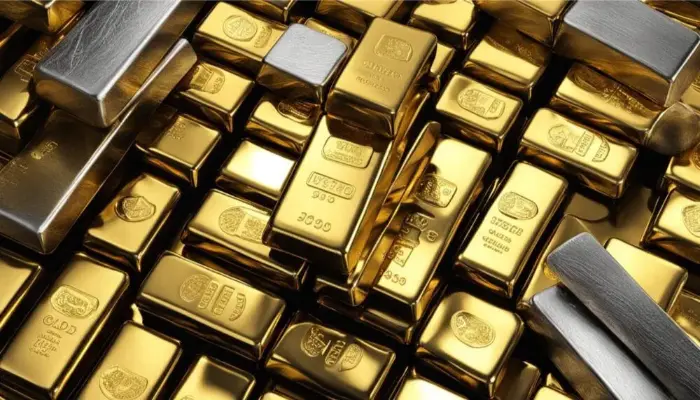As you consider the vast universe of investment opportunities, venturing into gold investment and silver investment might just be one of the most astute decisions for your wealth-building journey. Silver and gold stand in their own class of precious metals, which, for millennia, have been synonymous with affluence and financial security. In today’s marketplace, full of dynamic market insights, these metals continue to shine as essential components for a diversified investment portfolio.
Whether you’re partaking in gold trading or silver trading, the foundations of success rest upon a concrete strategy. It’s about looking beyond the allure of these shiny assets and understanding how investing in silver and gold can solidify your financial standing against unpredictable market waves, while also providing potential for significant growth.
Key Takeaways
- Gold and silver are traditional havens for wealth-building and preserving capital.
- Diversifying with precious metals can strengthen your investment portfolio against volatility.
- A strategic mix of gold and silver investments optimizes both security and the potential for returns.
- Comprehensive market insights are crucial for effective gold and silver trading decisions.
- Embracing both physical metals and financial products like ETFs can enhance your investment approach.
- Investment success in silver and gold requires attention to historical performance and future market trends.
The Significance of Diversification in Investment Portfolios
When you’re planning your financial future, one of the most reliable strategies for maintaining a steady course through the unpredictable waves of the market is to build a diversified investment portfolio. It’s a technique that can help you enhance your returns while managing investment risk. Diversifying isn’t just about spreading your investments; it’s a deliberate plan to optimize your financial resilience against market downturns.
Understanding Portfolio Diversification
Think of diversification as a kind of financial risk management. It combines a wide variety of investments within a portfolio to minimize the impact of any single asset’s poor performance. Essentially, diversifying helps to reduce the volatility over time because not all sectors or assets move in tandem. The goal here is not necessarily to boost performance—it may often reduce your potential of hitting a “home run”—but rather to protect against the unpredictable nature of markets.
Strategic Asset Allocation and Risk Management
When it comes to investing in gold bullion or other precious metals, strategic asset allocation plays a crucial role. This approach to investment involves regularly rebalancing your portfolio to align with your target asset allocation, which should reflect your appetite for risk and your financial goals. By adjusting your assets strategically—not reactively—you can manage the overall risk and work toward securing your investments against market shifts and economic trends.
Gold and Silver’s Role in Diversification
Gold and silver have stood the test of time as symbols of wealth and as stores of value. As part of a diversified portfolio, they function as tools for gold and silver risk management. Their value often moves independently of stocks and bonds, which can be beneficial in terms of risk management and strategic asset allocation. Investing in precious metals can serve as a hedge against inflation, currency risk, and geopolitical upheaval, providing a safety net during times of financial stress.
Incorporating gold and silver into your investment strategy can be done in various ways. Some investors prefer tangible assets like gold bullion or coins, while others may opt for gold and silver mutual funds or stocks in mining companies. The choice depends on factors such as liquidity preferences, investment time horizons, and your level of comfort with different types of assets.
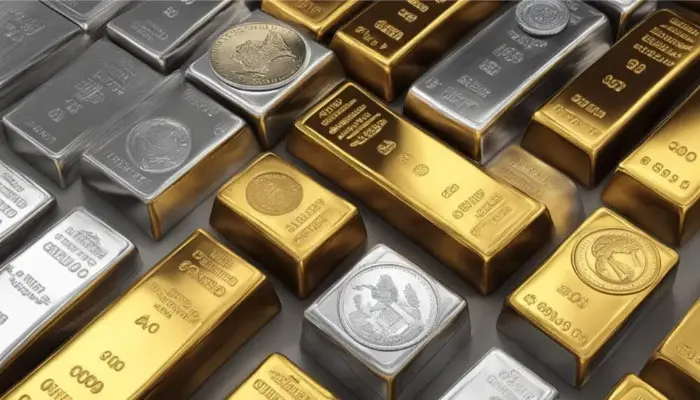
| Asset Type | Pros | Cons |
|---|---|---|
| Gold Bullion | Highly liquid, tangible asset, historical store of value | Requires secure storage, no interest or dividends |
| Silver Bullion | More affordable than gold, industrial demand | More volatile than gold, storage issues |
| Gold and Silver Stocks | Exposure to market growth, liquid | Subject to company-specific risks, market volatility |
| Gold and Silver Mutual Funds | Professional management, diversification within precious metals sector | Management fees, less direct asset control |
Remember, risk management is an ongoing process, and assets like gold and silver can play a key role in protecting your portfolio against various risks. By understanding the value of diversified portfolios, and by using strategic asset allocation, you can work towards a more secure financial future.
The Dual Edges: Weighing the Benefits and Risks of Precious Metals
As you consider a physical silver investment or delve into precious metal IRAs, it’s vital to acknowledge both the merits and the contingencies tied to these assets. Precious metals offer compelling advantages such as immunity from credit risk and a historical preservation of purchasing power against economic downslides like inflation or currency devaluation. This is precisely why gold and silver diversification has gained traction amongst those aiming to build a resilient investment portfolio.
However, alongside their strengths, precious metals are also familiar with volatility. They shirk away from yielding dividends or interest, making them a debatable choice for those who rely on regular income from their investments. This controversy surfaces discussions around their role in a modern portfolio. While neither gold and silver futures nor gold and silver mining stocks directly answer the call for cash flow, they introduce an element of leverage and sector-specific growth potential not found in physical holdings.
“Considering the volatile behaviour of the market, anchoring a small yet strategic portion of your investments in precious metals can strike the right balance between growth and safety.” – Excerpt from seasoned investors’ recommendations.
This insight complements advice from financial thought leaders like Kevin O’Leary and Ray Dalio, who preach the gospel of careful allocation—suggesting somewhere between 5% and 10% of an investor’s portfolio to be composed of gold and silver. This allocation serves to mitigate risk while still positioning for growth through a blend of stocks, bonds, and real estate.
- Physical Asset Protection: Unlike digital forms of investments, physical silver and gold provide a tangible safeguard against systemic financial risks.
- IRA Integration: Incorporating precious metals into retirement planning can hedge your savings against inflation over the long term.
- Diversified Exposure: Futures and stocks in mining companies offer increased exposure to gold and silver without the need for physical storage.
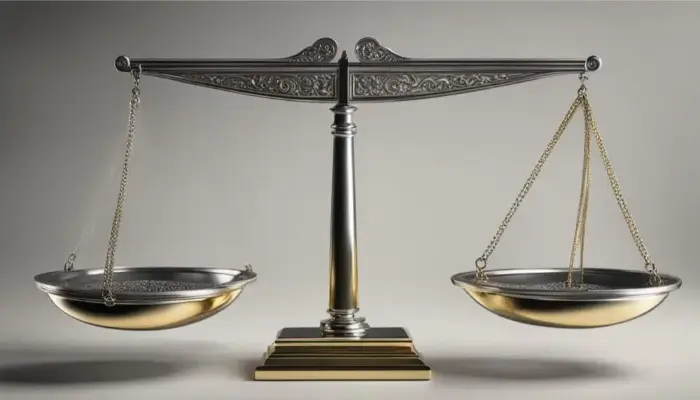
To synthesize, while the allure of gold and silver as part of a robust investment strategy is undeniable, it comes with the caveat of understanding and managing the inherent risks. Their role is not to singularly dominate, but to complement and strengthen an investor’s portfolio through calculated and deliberative diversification.
Navigating Uncertainty: Gold and Silver During Market Volatility
When markets become turbulent, investors often turn to safe-haven assets to protect their wealth from drastic fluctuations. Historically, gold and silver have fulfilled this role exceedingly well, drawing the attention of those looking to secure their investments against the unpredictable nature of global economies.
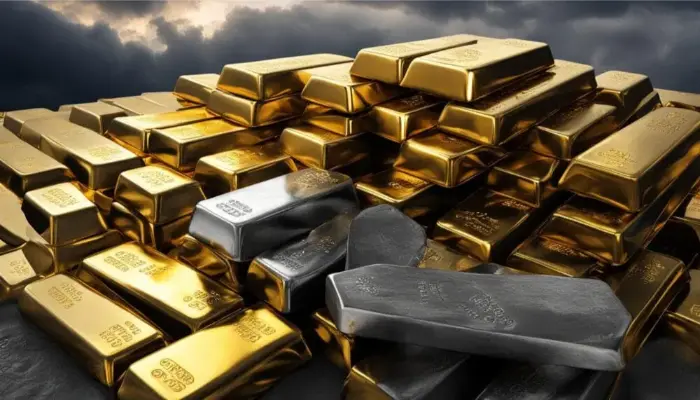
Gold and Silver as Safe-Haven Assets
The concept of gold and silver serving as safe-haven assets is not new. These precious metals have maintained their value across centuries, acting as bastions of stability even during severe economic downturns. One of the critical factors contributing to this status is the gold and silver liquidity, allowing for relatively easy conversion to cash when needed. An investor’s capability to quickly trade these metals at prevailing gold and silver spot prices adds to their appeal in volatile times.
Historical Performance in Times of Economic Turbulence
Delving into the past, it’s evident that gold and silver have consistently showcased their might as protectors and enhancers of wealth. When currencies waver and stock markets quake, the smart diversification into gold and silver can often mean the difference between financial survival and loss. Understanding the gold and silver ratios helps investors navigate the opportune moments to invest or divest these precious metals:
| Event | Gold Performance | Silver Performance | Gold/Silver Ratio |
|---|---|---|---|
| 2008 Financial Crisis | Surged by 25% | Slight decline before rebounding | Rose sharply, indicating gold’s stronger haven appeal |
| European Sovereign Debt Crisis | Maintained steady growth | Volatility with eventual gains | Fluctuated, showing temporary preference for gold |
| 2020 Global Pandemic | Hit record highs | Substantial increases | Initially widened, then decreased as silver caught up |
In your journey through the often tempestuous financial markets, integrating gold and silver into your investment portfolio can be an anchor amidst the sea of volatility. By doing so, you shield your fiscal stability from the whims of the economy, using ancient wisdom to handle modern financial challenges.
Investing in Silver and Gold: Tailoring Your Strategy to Your Financial Goals
Understanding your financial objectives is paramount when it comes to long-term gold investment and customizing your approach in accumulating precious metals. Your age, the strength of your national economy, and personal investment preferences are instrumental in shaping a strategy that suits your financial situation. Considering the dynamic nature of gold price trends and silver price trends, incorporating these precious metals into your portfolio requires a nuanced approach.
When you’re looking at buying gold or buying silver, think of them as insurance against economic twists. While they might not deliver the immediate high returns of more volatile investments, they serve as a hedge, preserving your wealth during downturns. Moreover, those considering selling gold or selling silver need to stay updated on current market trends to optimize the resale value, making timing a crucial aspect of precious metals trading.
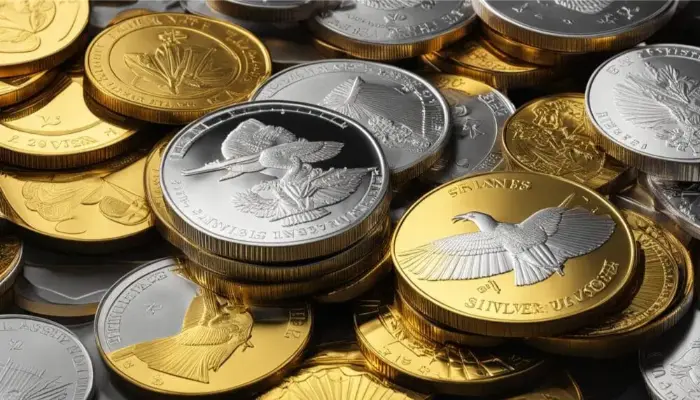
- The percentage of gold and silver in your portfolio should correlate with the stability of your country’s currency. The more volatile the currency, the higher the percentage you might want to allocate to precious metals.
- Age is also a significant factor; younger investors may choose to take more risk with growth-oriented assets, while those nearing retirement could prioritize the security of gold and silver.
- Watch the market indicators keenly; they guide you on when it might be more beneficial to increase your holdings or capitalize on the selling gold or selling silver opportunities.
Whether you are purchasing bullions, coins, or financial instruments tied to the value of precious metals, remember that diversification is key. Your overall financial health should reflect a balance of investments, where gold and silver play their vital part in stabilizing and potentially bolstering your portfolio against the unpredictable movements of the market.
By aligning your investment actions with your long-term objectives and staying observant of precious metals market trends, you can craft a portfolio that resonates with your financial aspirations and affords you peace of mind.
Top Investment Strategies for Precious Metals
When you delve into the realm of precious metals investment, the strategies at your disposal are as varied as they are dynamic. In your pursuit of a solid gold and silver portfolio, you may consider the traditional route of owning physical gold and silver. This tangible form of wealth, consisting of coins and bullion, gives you a palpable sense of security and control over your assets. However, bear in mind the necessity for secure storage and insurance, as these are crucial to safeguarding your physical investments.
Moving beyond the physical, the modern investor often gravitates towards gold and silver Exchange-Traded Funds (ETFs). These investment vehicles offer you the flexibility and liquidity that physical metals cannot, with the added advantage of being easily tradable like stocks. While ETFs are a hassle-free way to incorporate precious metals into your portfolio, they bring along management fees that you should account for when calculating potential returns. Moreover, in-depth gold and silver market analysis can inform your decisions by providing insights into ongoing trends and price predictions.
The allure of gold and silver doesn’t end with ETFs and physical ownership—mining stocks are another avenue to achieve exposure to the market. By investing in reputable mining companies, you not only gain leverage to the prices of precious metals but also capitalize on the corporate growth potential. This strategy, however, introduces additional risks related to individual company performance. Therefore, aligning with expert precious metal dealers and staying abreast of silver investment strategies can enhance your prospects. In summary, your ultimate challenge is to balance these diverse strategies with a keen eye on the market’s pulse, ensuring that your precious metals portfolio is well-rounded and resilient against economic vicissitudes.
FAQ
What Are the Key Benefits of Investing in Gold and Silver?
The key benefits of gold and silver investments include wealth preservation, potential for capital growth, the stability amidst inflation and currency devaluation, and diversification of an investment portfolio. These precious metals have historically maintained their value over long periods, making them attractive for market insights and wealth-building strategies.
How Do Gold and Silver Contribute to a Diversified Portfolio?
Gold and silver contribute to portfolio diversification by providing assets that are generally uncorrelated with traditional stocks and bonds. This means that when other parts of the market are in decline, gold and silver may hold their value or even appreciate, improving overall portfolio stability and reducing risk.
What Are the Risks Associated with Precious Metal Investments?
While precious metals offer numerous benefits, they also carry risks such as price volatility and lack of yield. Unlike dividend-paying stocks, gold and silver do not produce income. Thus, they can be less desirable during market conditions favoring high-yielding assets; however, they shine as a risk management tool when economic uncertainty is high.
Why Are Gold and Silver Considered Safe-Haven Assets?
Gold and silver are considered safe-haven assets because they have held their value through times of economic instability, market volatility, political unrest, and inflationary periods. Investors often turn to these precious metals as a means of protecting wealth when confidence in other investments is low.
How Do I Align My Gold and Silver Investment Strategy With My Financial Goals?
To align your gold and silver investment strategy with your financial goals, consider your personal risk tolerance, time horizon, and financial objectives. Assess the role that precious metals play in your overall portfolio, keeping in mind their unique properties for wealth preservation. Consulting with a financial advisor can also help in tailoring the strategy to your specific needs.
What Are Some of the Top Investment Strategies for Precious Metals?
Top investment strategies for precious metals include buying bullion or coins for direct physical ownership, investing in gold and silver ETFs for liquidity and convenience, and purchasing shares in mining companies for exposure to the industry’s potential profits. Each method comes with its set of considerations regarding storage, liquidity, fees, and exposure to sectorial risks.


